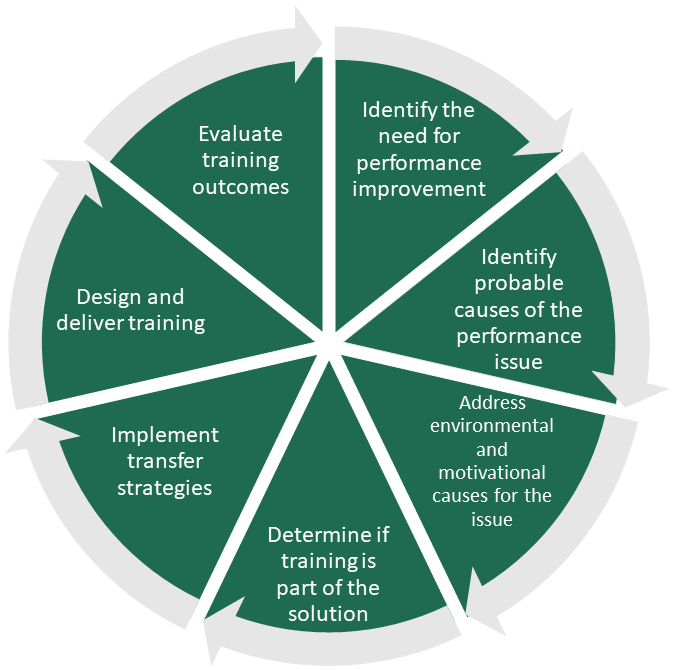Education Design: Learning Theory
Barriers to Transfer
We noted previously that covering too much content is a significant barrier to transfer. Broad and Newstrom identified additional sources of barriers in their research on workplace training:
- Lack of Enforcement on the Job
- Interference from Immediate Work Environment
- Non-Supportive Organizational Culture
- Trainees Perception of Impractical Training Programs
- Trainees Perception of Irrelevant Training Content
- Trainees Discomfort with Change and Associated Effort
- Separation from Inspiration or Support of the Trainer
- Trainees Perception of Poorly Designed/Delivered Training
- Pressure from Peers to Resist Changes
They concluded that just one of these (#4) is the primary responsibility of the learner. The educator must ensure that the participants perceives that the training is relevant and practical (#4 and #5), and that the activity is well designed (#8). Secondarily, the educator must also realize that all change efforts meet resistance (#6) and the education that ends at the door often proves ineffective (#7).
Understanding these barriers can help the educator design activities that mitigate them and promote driving forces for change. Broad and Newstrom use Kurt Lewin's change model as a basis for mitigating barriers. They also a present a model for making decisions about training needs. This might look familiar:
